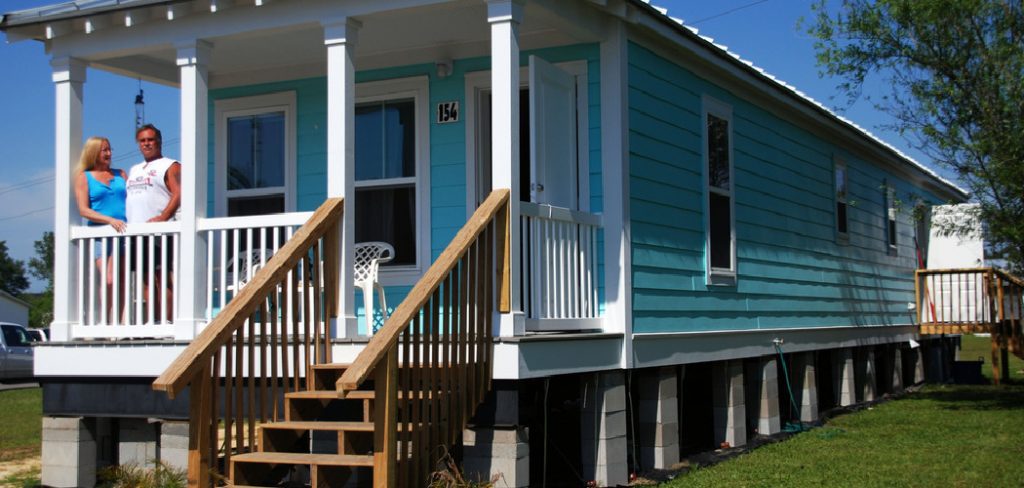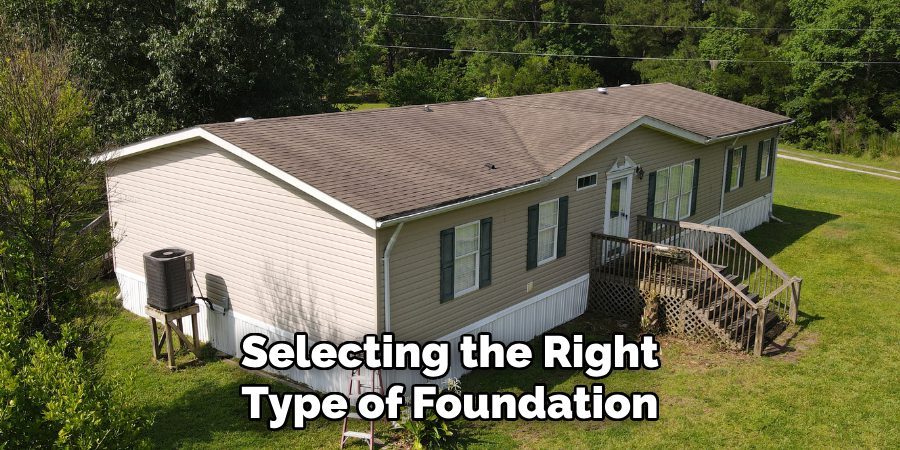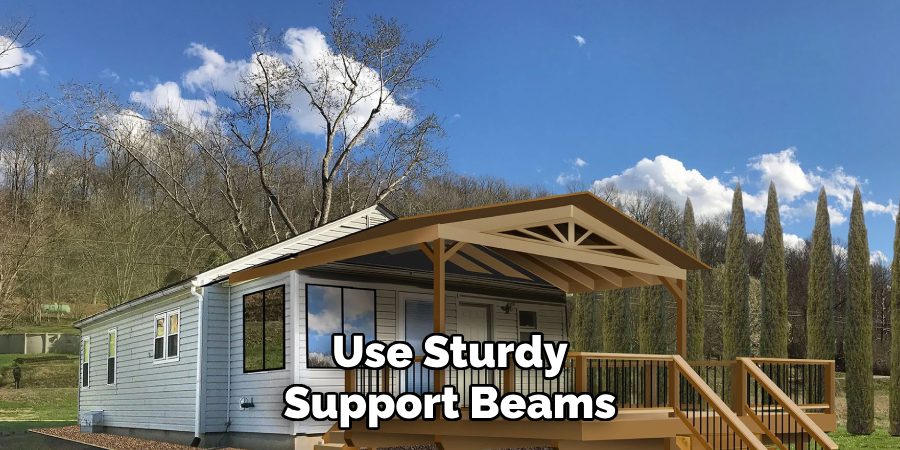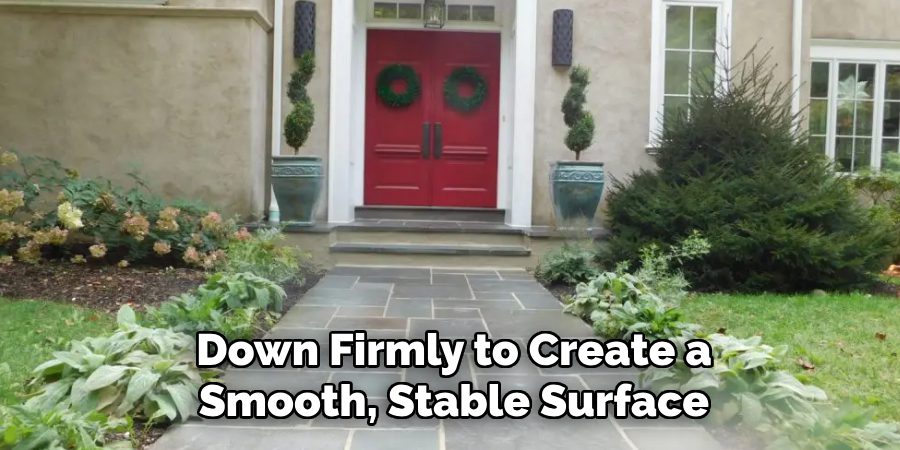Building a porch for a mobile home not only enhances its aesthetic appeal but also adds valuable functional space to your living area. A well-designed porch can serve as a relaxing outdoor retreat, a welcoming entrance, or an extension for hosting family and friends.

Whether you’re looking to boost your home’s curb appeal or create a practical addition, constructing a porch is a rewarding project that can be tailored to suit your style and needs. This guide will walk you through the essential steps and considerations for how to build a porch for a mobile home.
Importance of Adding a Porch to a Mobile Home
Adding a porch to a mobile home is more than just a design enhancement—it provides several practical and lifestyle advantages. First, a porch can significantly improve the curb appeal of your home, making it more inviting and visually appealing. It creates a defined entrance area and adds character to what might otherwise be a basic exterior. Functionally, a porch offers additional living space, perfect for outdoor seating, relaxation, or entertaining guests.
It can serve as a transitional area that provides protection from the elements, keeping rain or snow from directly entering your home. Furthermore, a well-built porch adds value to your property by increasing its overall usability and market appeal. It’s a versatile addition that combines functionality, comfort, and aesthetic value, making it a worthwhile investment for any mobile home owner.
Choosing the Porch Type
Before starting construction, it’s essential to decide on the type of porch that best suits your mobile home and meets your needs. There are several porch styles to consider, each offering unique benefits and aesthetics. For a simple and functional option, a basic front porch with steps and a railing may be ideal, especially if you’re prioritizing accessibility and ease of construction.
If you desire a more expansive outdoor space, a wraparound porch can provide additional room for seating and activities while adding charm to your home’s exterior.
On the other hand, a screened-in porch offers protection from insects and weather, making it perfect for those who want to enjoy the outdoors in a comfortable, enclosed environment. Choose a design that complements the architecture of your mobile home and aligns with your lifestyle, budget, and intended use for the space.
Choosing the Right Porch Foundation
The foundation of your porch is a critical element that provides stability, safety, and durability to the structure. Selecting the right type of foundation depends on several factors, including the size of the porch, the weight it will bear, and the soil and climate conditions in your area. Common options for porch foundations include concrete piers, slab foundations, and block footings.

Concrete piers are a popular choice for mobile home porches due to their affordability and ease of installation. They offer excellent support and can accommodate varying heights, making them ideal for uneven ground. A slab foundation, on the other hand, provides a solid and uniform base that is ideal for larger porches or those requiring heavy furniture or fixtures.
It requires more preparation and materials but delivers unmatched stability and longevity. Lastly, block footings are versatile and can be used to create a raised porch structure, allowing for good ventilation underneath while maintaining a sturdy base.
10 Methods How to Build a Porch for a Mobile Home
1. Planning and Obtaining Permits
Before breaking ground, it is essential to plan the porch design and check local building codes. Many areas require permits for adding structures to mobile homes, especially if they are attached to the main home.
The planning phase should involve selecting a location, determining the porch size, and choosing the type of porch—open, covered, or enclosed. Additionally, decide on the primary building materials such as wood, composite, or concrete, ensuring they complement the home’s exterior.
2. Choosing the Right Foundation
A porch requires a solid foundation to remain stable over time. The foundation type largely depends on the porch’s size and weight. For small porches, concrete blocks or precast piers provide sufficient support, while larger, heavier porches require concrete footings that extend below the frost line. A floating deck, which rests on deck blocks, is another option for mobile homes, allowing flexibility while maintaining stability.
3. Building a Sturdy Frame
The porch frame serves as the structural backbone and must be strong enough to support weight loads. Construct the framework using pressure-treated lumber to prevent moisture damage. The most common framing method involves setting up beams and joists spaced appropriately (usually 16 inches apart). The frame should be securely anchored to the foundation using galvanized brackets and fasteners, ensuring long-term durability.

4. Installing Proper Support Posts
Support posts provide vertical stability for the porch and, if applicable, its roof. Using 4×4 or 6×6 pressure-treated posts, place them at appropriate intervals along the perimeter of the porch. Posts should be anchored firmly into concrete footings or secured with post brackets for enhanced stability. If the porch includes a roof, the posts must be tall enough to provide adequate head clearance while supporting the weight of the structure above.
5. Constructing the Decking Surface
The decking material is crucial for both aesthetics and functionality. Pressure-treated wood, composite decking, and cedar are common choices. Boards should be spaced slightly apart to allow for drainage and expansion due to temperature changes. Secure the boards using galvanized screws or nails, ensuring they are flush and level. To enhance longevity, consider applying a weatherproof sealant or stain.
6. Adding Railings and Balusters
If the porch is elevated more than 30 inches above ground level, most building codes require railings for safety. Construct the railing using 2x4s for the top and bottom rails and evenly spaced balusters. The balusters should be no more than 4 inches apart to prevent small children from slipping through. A well-built railing enhances the porch’s appearance while providing an essential safety barrier.
7. Installing Steps and Handrails
Properly constructed steps are essential for accessibility. Use treated lumber to build a sturdy staircase with risers that follow standard step height guidelines (typically 7-8 inches high and 10-11 inches deep). Attach stringers securely to the porch frame, and add treads that offer good traction. Handrails should be installed on at least one side for support, ensuring they meet local safety regulations.
8. Constructing a Roof or Covering
A covered porch provides shade and protection from the elements, making it a more enjoyable outdoor space. There are multiple roofing options, including a simple lean-to roof, an awning, or an extension of the mobile home’s existing roof.
Use sturdy support beams and attach rafters securely to both the porch structure and the mobile home (if local codes allow). Metal, asphalt shingles, or polycarbonate panels make excellent roofing materials, offering durability and weather resistance.

9. Enclosing the Porch (Optional)
For a more private and weatherproof space, consider enclosing the porch with screens, windows, or solid walls. Screened porches keep insects at bay while allowing fresh air circulation. Full enclosures with glass windows create a sunroom-like extension, usable year-round with proper insulation. When enclosing a porch, ensure adequate ventilation and lighting to maintain a comfortable environment.
10. Finishing Touches and Maintenance
Once the main structure is complete, add finishing details to enhance the porch’s appeal and longevity. Staining or painting the wood protects against moisture and UV damage. Adding outdoor furniture, potted plants, and lighting improves comfort and aesthetics. Regular maintenance, such as sealing the deck, inspecting for loose screws, and cleaning debris, ensures the porch remains in excellent condition for years to come.
Things to Consider When Building a Porch for a Mobile Home
When planning and constructing a porch for a mobile home, several factors should be carefully considered to ensure safety, functionality, and aesthetic appeal. First, always check local building codes and zoning restrictions to ensure compliance, as ignoring these requirements can lead to costly penalties or the need to rebuild.
Additionally, consider the climate and weather conditions in your area—materials like pressure-treated wood or composite are better for regions with high humidity or frequent rain, while metal roofing can handle heavy snow loads.
Budget is another crucial factor, as the costs can quickly add up depending on the size, materials, and complexity of the porch design. Setting a realistic budget at the outset and prioritizing key features helps avoid unexpected expenses. Accessibility is also important; make sure the porch design accommodates all users, incorporating ramps or wide steps if needed.

Lastly, evaluate the integration of the porch with your home’s existing design and structure. This not only enhances curb appeal but also ensures the porch complements the overall style and doesn’t appear as an afterthought. Taking these key considerations into account will result in a porch that is both durable and visually appealing.
Conclusion
Building a porch for a mobile home is a rewarding project that enhances both the functionality and aesthetic appeal of your property. By carefully planning each step, from selecting the right materials to adhering to building codes, you can create a safe, durable, and attractive outdoor space.
A well-constructed porch not only provides a comfortable area for relaxation and entertainment but also adds value to your home. With proper maintenance and attention to detail, your porch will remain a cherished space for years to come, blending seamlessly with your mobile home and serving as an inviting extension of your living area. So, there you have it – a quick and easy guide on how to build a porch for a mobile home.

Professional Focus
Oliver Wood, a passionate patio designer, specializes in creating comfortable and inviting outdoor spaces that enhance relaxation and entertainment. His work combines a deep understanding of design with a love for nature, making him a standout professional in the field of outdoor living spaces. Through his thoughtful approach, he transforms everyday patios into extraordinary retreats for family and friends.
About the Author
Oliver Wood, a skilled patio designer, shares his expertise on outdoor living through his designs and insights. With a background in patio design and a genuine passion for creating beautiful spaces, he encourages others to invest in their outdoor environments, enhancing their homes with functional and inviting spaces for relaxation and entertainment.
Education History
University: Virginia Union University
Oliver’s education equipped him with the knowledge and skills to design patios that merge aesthetics with comfort, transforming outdoor areas into beautiful extensions of the home.
Expertise:
- Patio Design and Outdoor Living Spaces
- Functional and Aesthetic Landscaping
- Comfortable and Inviting Outdoor Environments
- Design Philosophy for Family-Oriented Spaces
- Creating Spaces for Relaxation and Entertainment
